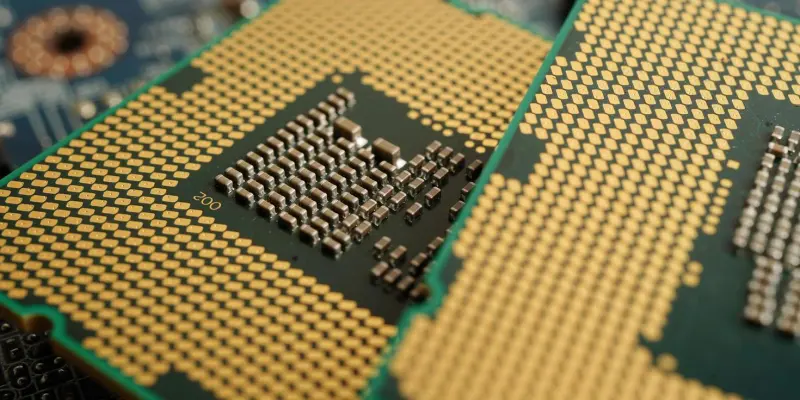Intel’s recent decision to cut the price of its Core Ultra 7 265KF processor by a substantial $100 marks a pivotal moment in the competitive landscape of central processing units. Priced now at $294, this shift places Intel in direct competition with AMD, particularly challenging the Ryzen 9700X’s market position. The backdrop to this decision was the initial lukewarm reception of Intel’s processors, notably for gaming applications following the fall 2024 launch of the Core Ultra 200 series. Thus, the repricing represents a strategic recalibration that has revitalized Intel’s standing and presented consumers with a value proposition difficult to ignore.
Pricing Strategy and Market Position
Competitive Pricing in Focus
With the Core Ultra 7 265KF’s price reduction, Intel directly aims to capture the segment heavily contested by AMD Ryzen 9700X. This aggressive price cut positions Intel as a serious contender against AMD, whose processors had previously been deemed more affordable and valuable due to Intel’s erstwhile pricing paradigm. The market’s dynamics are now dramatically reshaped. This move caters to those critical of the earlier pricing structure by providing economic yet powerful processing alternatives. It opens up the market to consumers prioritizing cost-effectiveness without wanting to compromise on either productivity or gaming performance, an area previously dominated by AMD.
Intel’s approach to adjusting prices reflects a broader strategy to align with the evolving expectations of customers looking for efficiency and performance. Despite initial gaming performance pitfalls, Intel’s “Arrow Lake” processors have undergone significant enhancements. These improvements not only address efficiency issues but also cater to professional tasks where AMD once held an edge. By shaving $100 off the price, Intel acknowledges consumer demand, aiming to remove price as a barrier, thereby attracting a more diverse user base to its upgraded Arrow Lake capabilities.
Gaming and Productivity Balance
The Core Ultra 7 265KF’s appeal is not limited to its competitive pricing. It holds its ground against the AMD Ryzen 9700X, maintaining comparable gaming performance while offering a distinct advantage in productivity tasks. This is particularly evident in its 20-core design, markedly more robust than AMD’s 8-core offering. Such a configuration benefits users engaged in multitasking environments, providing the raw computational power necessary for demanding applications. These advancements break the traditional mold, recognizing that consumers often seek a balance between gaming capabilities and productivity efficiency.
Furthermore, the Core Ultra series excels in terms of power efficiency, emphasizing performance per watt as a critical measure of capability. This focus on reduced power consumption resonates with current consumer preferences for eco-friendly and budget-friendly setups. The endurance of these processors in high-demand situations reflects Intel’s understanding of market trends and the increasing importance of power-efficient technologies, subsequently enhancing their appeal to both gamers and professionals concerned with energy costs and sustainability.
Technological Advancements and Market Appeal
Cutting-Edge Features and Innovations
Innovation lies at the heart of Intel’s processor revitalization, where the Core Ultra 7 265KF embodies the company’s commitment to integrating advanced technologies that were previously unavailable. One standout feature of these processors is their compatibility with cutting-edge memory standards like CUDIMM, exceeding 8,000 MHz. This enhancement not only ensures superior processing speeds but also future-proofs the system against emerging demands, setting Intel apart from its competitors. Moreover, the onboard GPU and NPU further enhance the processor’s versatility, catering to a wide range of professional and recreational uses that demand reliable and powerful multimedia processing capabilities.
The technological edge offered by Intel signifies a broader shift toward embracing modern advancements in computing. By incorporating these features, Intel effectively raises the bar, driving innovation and setting new industry benchmarks. For consumers and enthusiasts eager to adopt the latest tech, the Core Ultra series represents a significant leap forward, marrying affordability with cutting-edge performance.
Strategic Implications in the CPU Arena
Intel’s recalibrated strategy does not merely focus on cost-containment but reflects a nuanced understanding of consumer needs and market shifts. By delivering a product that balances price with performance and innovation, Intel challenges the competition, inviting consumers to reconsider their brand loyalties based on merit rather than tradition. This realignment underlines Intel’s commitment to sustaining competitiveness and relevance by addressing not just consumer expectations but also broader industry evolutions. The ramifications of Intel’s strategic decisions are likely to reverberate across the CPU landscape. As the company continues to pivot towards value-driven offerings complemented by technological advancements, it positions itself as a responsive and adaptive player in a fast-evolving market. This trajectory not only promises immediate consumer benefits but also sets a precedent for future developments in processor technology, encouraging continued innovation and competition industry-wide.
Redefining the CPU Market Landscape
Intel’s decision to slash the price of its Core Ultra 7 265KF processor by $100 signifies a crucial shift in the ongoing competition among central processing unit manufacturers. This price reduction, bringing the processor down to $294, positions Intel against AMD’s offerings, challenging the Ryzen 9700X. This move follows the mediocre reception of Intel’s processors, particularly for gaming, after the launch of the Core Ultra 200 series in the fall of 2024. The initial feedback highlighted shortcomings in performance for gaming enthusiasts, prompting Intel to reevaluate its pricing strategy. By reducing the cost, Intel aims to regain its competitive edge in the market, presenting consumers with a more compelling option that not only challenges AMD’s dominance but also offers significant value for money. This strategic repricing could revitalize Intel’s market presence, attracting a broader consumer base eager to find high-performance processors that cater to gaming and other demanding applications.

